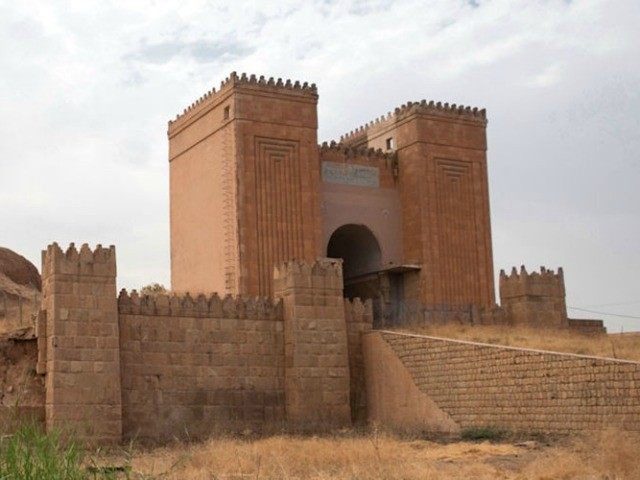Sources in Mosul, Iraq, have reported that the Islamic State (ISIS/ISIL) used military equipment to destroy the ancient monument known as the Gate of God.
The British Institute for the Study of Iraq told The Independent that Islamic State jihadists attacked the gate located in eastern Nineveh province. The Gate of God, also known as the Mashqi Gate, was built in the seventh century BC during the reign of Assyrian King Sennacherib.
In January 2015, residents in Mosul informed the Assyrian website Ankawa that the militants planned to target the walls of Nineveh. Unnamed sources said the Islamic State leaders told members to set booby traps along the walls. If the Iraqi army attempts to liberate the area, the militants must “complete the bombing of the historic walls.” Historians attribute the walls to King Sennacherib, who rebuilt the city during his reign, beginning in 704 B.C., and consist of a seven-and-a-half-mile barrier around the city—presumably to protect it from attack when it served as the capital of ancient Assyria. Nineveh was so important and Sennacherib’s contributions so great that some archaeologists have gone as far as to attribute to him the construction and maintenance of the ancient Hanging Gardens, supposedly located in Babylon.
The Islamic State has destroyed tombs, statues, books, and libraries since they invaded Mosul in June 2014. They blew up a shrine to Jonah, the biblical prophet, and Yunus in the Koran.
“Islamic State completely destroyed the shrine of Nabi Yunus after telling local families to stay away and closing the roads to a distance of 500 metres from the shrine,” an official with the Sunni endowment told the AFP.
Settlers built the shrine in eighth century BC. Worshippers believe that the prophet Jonah, most famous, in biblical legend, for surviving being swallowed by a whale, rests there. Saddam Hussein renovated the shrine, and it remained a popular site for pilgrims.
The militants also raided the Central Library of Mosul to destroy all non-Islamic books.
‘These books promote infidelity and call for disobeying Allah,” announced a militant to the residents. “So they will be burned.”
The library contained “the biggest repository of learning the northern Iraqi town.” More than likely the terrorists destroyed “Iraq newspapers dating to the early 20th century, maps and books from the Ottoman Empire, and book collections contributed by about 100 of Mosul’s establishment families.” After that raid, the militants targeted the library at the University of Mosul. They burned science and culture textbooks in front of the students. The Boston Globe reports:
A University of Mosul history professor, who spoke on condition he not be named because of his fear of the Islamic State, said the extremists started wrecking the collections of other public libraries last month.
He reported particularly heavy damage to the archives of a Sunni Muslim library, the library of the 265-year-old Latin Church and Monastery of the Dominican Fathers, and the Mosul Museum Library with works dating back to 5000 BC.
Citing reports by the locals who live near these libraries, the professor added that the militants used to come during the night and carry the materials in refrigerated trucks with Syria-registered license plates.
The terrorists have also salvaged relics to sell to Western antique collectors. Antique sales pushed the group’s accounts from under $1,000 to billions. These militants control around 4,500 archeological sites. In al-Nabuk, they stole antiques more than 8,000 years old, which netted $36 million for the jihadists. They allowed residents and gangs to loot the shrines, but they had to give 20 to 50 percent of their profits to the Islamic State.

COMMENTS
Please let us know if you're having issues with commenting.